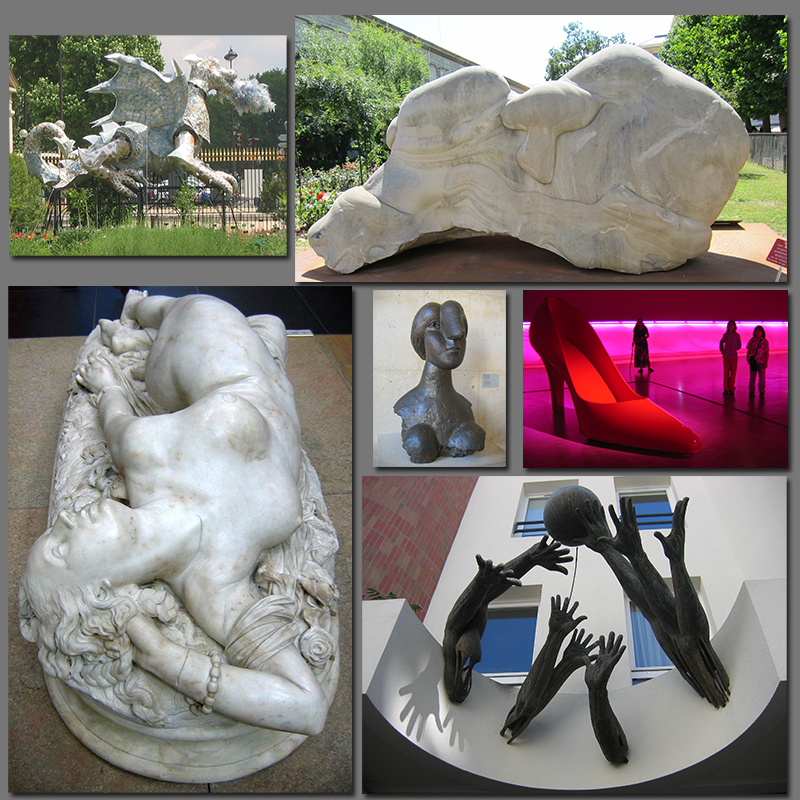What is art? Do the objects in the images above form a category of “sculpture”?
In Kindergarten, young students are taught a game: every kid brings an object to class; each student is asked to create two piles—the “in” group and “out” group—based on his/her own imagined set of rules; the other children guess the rules that make the category. It’s a great game. A collection of 20 objects can be sorted a staggeringly large number of ways: by color, by size, by use, by ownership, by gender, by taste, by feel, by name, by materials used in manufacturing, by the degree of fun, by shape, by temperature, by degree of reflectiveness or transparency, by the feelings they inspire, by history, by age, by weight, by dimensions, by utility, by the maker, by origin, or any other trait or combination of traits. This is a task that’s truly shaped by imagination.
Categorization is a work of creativity. Guessing the rules of categorization is deductive reasoning at its best—scientists, detectives, and doctors do it everyday. But unlike the Kindergarten game, there’s usually no one to tell when the guess is wrong.
How we perceive a group of objects depends on the context in which we encounter them. Young kids made a consistent error when they mistook chocolate-smelling crayons for food: if it’s brown and smells like chocolate, (and is served by mom on the kitchen table), it must be edible. This is sound deductive reasoning. Unfortunately it led to lots of hospital visits and belly-aches, forcing the company to abandon food-scented drawing implements. The strawberry-aroma-filled crayons are now just a collectors’ item.
The photos above are all of objects that can be found in Paris, France. Some are public outdoor installations (top row and bottom right), and some reside in museums. But are they all art? By placing the giant red shoe in the Pompadour Center, the curators were providing a context in which it could be lumped together with the Michelangelo’s David (although my sons would strongly disagree). But if placed in a store window, the same giant red shoe wouldn’t be categorized as art by the majority of those passing by.
If context can aid category formation, it can also subvert it. Until only recently, Pluto was still a planet. What changed? Certainly not the physical characteristics of this celestial object—it is still 2,280 kilometers in diameter and still takes 248 Earth years to complete its orbit. But as science knowledge expanded, so did our ability to form celestial categories. Now we have a category class called Kuiper Objects and Dwarf Planets. Pluto fits both of these new categories. When the context of planet discovery was more limited, Pluto was classified as a planet. As our knowledge grew and our understanding of the universe changed, so did the context. Background knowledge is a crucial component of category formation.
Unfortunately, the context for Pluto re-designation changed for some and not for others. By virtue of a state law, Pluto is still legally considered a planet in Illinois, the home state of Clyde Tombaugh, the discoverer of Pluto. Every day/night, as it passes over the state, Pluto is a planet!
So back to the photos above, the image in the top right corner is a stone formation. It is not a man-made object. It is displayed as a “statue” in the Jardin des Plantes, Paris. Is it still in the art category? Depends on the context!

